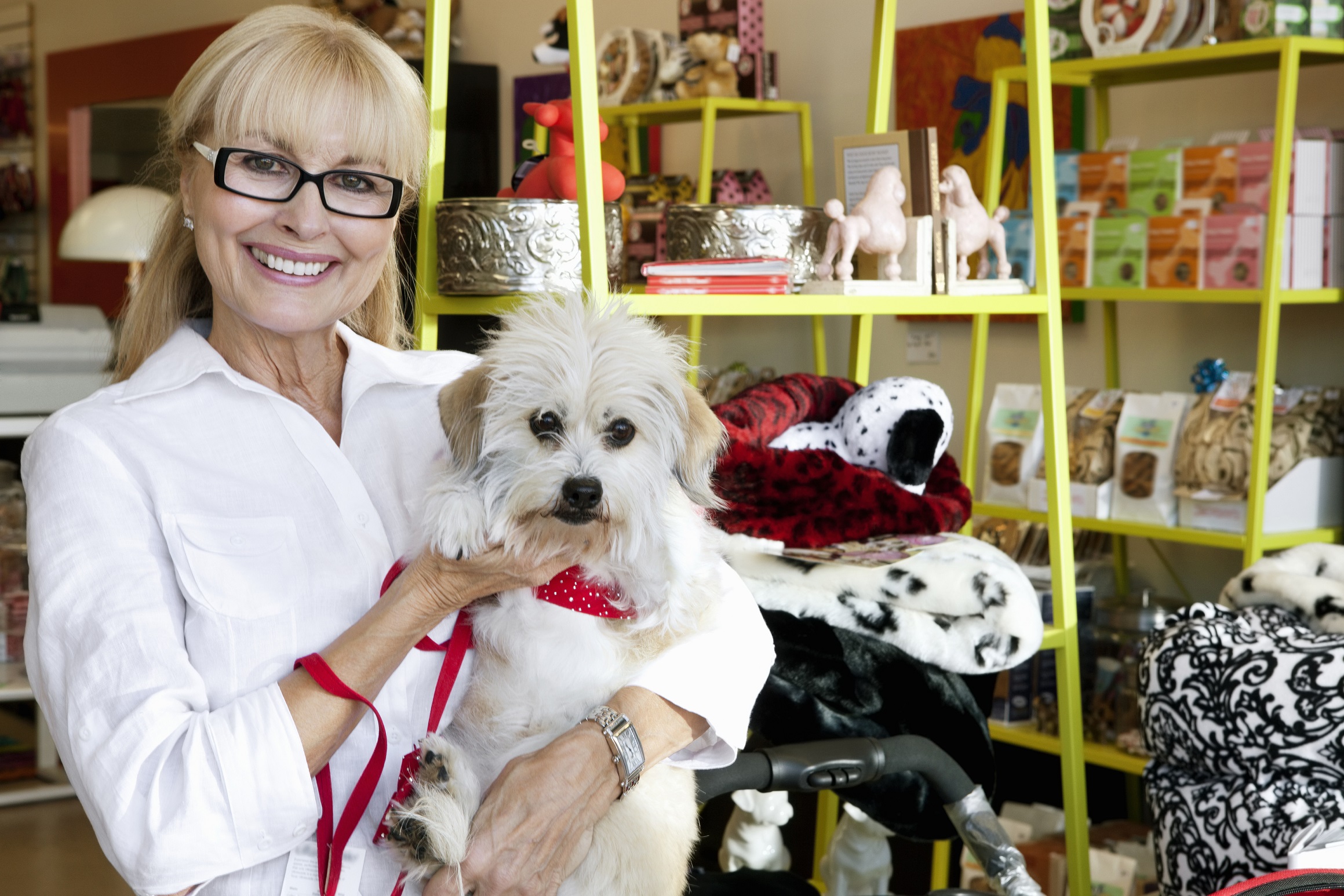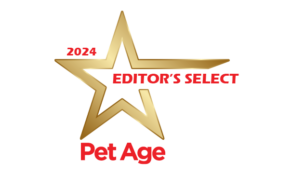Talking ‘Bout the Generations’ Spending
Colleen Murphy //March 22, 2017//
A 20-year-old college student with a pet hamster in his dorm room. A 32-year-old married couple with two children and a dog. A 50-year-old couple with a cat and their kids’ college loans to pay off. A 65-year-old retiree with a pet iguana. These people are all pet owners and have all had a hand in helping the pet industry continue to grow into the more than $60 billion industry it is today. However, understanding just how much these differently aged pet owners contribute to that growth, how they respond to different forms of marketing and what buying trends we can expect from them in the future can help retailers in making key strategic decisions—and a profit.
To get a grasp of who spends how much and on what in the pet industry, the amount each generation spends is often analyzed and compared. These studies have found that, in general, baby boomers are the top spenders, while millennials are the future spenders. But according to “The Pet Business Professor” John Gibbons, president of A GPS For Pet Businesses, a better way to determine who is spending how much on which pet products is to look at the owners’ life stages, rather than lumping whole generations together.
The age span of the two generations focused on the most by the pet industry is wide. A baby boomer can be a 71-year-old widow surviving off a pension or a 53-year-old who is earning top pay. A millennial can be a 19-year-old college freshman or a 35-year-old wife with several children.
Instead, Gibbons suggests the pet industry looks at smaller groups within each generation, such as those of the age who will be sending their kids to college, and thus, spending less on pets, or those of the age who are getting married and buying a house, but waiting to have children, and thus, are more likely to start their family with pets.
By analyzing the studies that break down entire generations and understanding the different lifestyles and spending habits of the owners of varying ages in those generations, the pet industry can help itself in continuing to succeed in the present and preparing for the future.
Homes and Pets
According to Gibbons, the single most influential date for the pet industry might be June 22, 1944, for it was then that the GI Bill was signed and—thanks to no down payment Veterans Affairs loans—Americans began to move into the suburbs at greater rates.
“Homeownership made the whole idea of having pets possible,” Gibbons said. “You have space you can own and control. You decide if you have two cats and a dog, and that never before was available to most Americans.”
Because baby boomers’ parents bought the pets to go along with the newly acquired houses, having a pet was a natural way of life, Gibbons said. This belief has followed the generation into adulthood.
Seeing that there is a direct correlation between owning a house and having the ability to own a pet and, in turn, purchase pet products—in fact, Gibbons says 80 percent of pet products spending comes from homeowners—it is important to look at what America can expect home ownership to look like in the future for the up and coming generations. For example, according to Gibbons, at 33 percent, a majority of millennials do not own a house—compared to the national average of 62 percent. Can we expect the rate of homeownership among millennials to increase? Gibbons says looking at governmental policy might be an indicator as to what we can expect the homeownership level to be in the future. Are policies being made to make it harder or easier for people to purchase a home? Consider this and the future of the pet industry might be a bit clearer.
And according to Gibbons, there is a particular household that spends the most money on their pets. The house is comprised of three people: a married couple and a child who is over 18 and still living at home.
“Mom and Dad are in the 55-to-64-year-old age range. They are white, but not of Hispanic origin. At least one of the parents has an advanced college degree,” according to Gibbons’ research, originally published on his Pet Business Professor website. “Everyone works in the [household]. Mom and Dad have their own business, but their child also works—at least part time. They’re doing very well with a total household income in excess of $150,000. They own their home—or to be more accurate, share ownership with the bank. They live in a rural area (under 2,500 population) in the West, but it is adjacent to a good-sized metropolitan area. This gives them plenty of space for their companion animals, but they are still close enough to commute to the city for business, shopping and entertainment—the benefits of the urban environment. We all wish that there were more of them.”
Lifestyles and Pets
When considering what types of products each age segment will best respond to, take a look at their lifestyles.
Ted Busciacco, owner of Pawsitively Purrfect in Hightstown, New Jersey, says he has seen an increase of attention being paid to environmentally-friendly companies and products within the pet industry, and so he has seen this change reflected on his store’s shelves.
“I would say the millennials are much more conscious about the environment, so a lot of manufacturers are taking that into consideration with the products they’re coming out with, they’re packaging,” Busciacco said. “So I feel our product selection has changed to fill that niche.”
While the younger customers might look at whether a product is good for the environment, most of them are probably not looking into purchasing medical-related items or veterinary care.
“[Younger] people don’t think about their own medical needs—you don’t start thinking about that until you get older,” Gibbons said. “So that’s another reason why veterinary spending lifts with old age, because they’re paralleling—as they say—the humanization of pets. We’re doing the same thing with veterinary care. You don’t think about it. If you’re not thinking about your own, you’re not thinking about your pet’s.”
The younger generations are also always on the go. With the needs and wants for people with this lifestyle in mind, Ultra Pet created Neon Litter.
“[Millennials] lead very busy lives, and Neon, in particular, is very forgiving,” said Tom Atyeo, Neon Litter’s vice president of marketing. “It absorbs odors, it clumps—you don’t have to service your litter box [as often as you do with other litters], maybe only two or three times a week. So [the draw of the product] became all the things that gave them more time to spend with their cats or whatever else they had to do in their lifestyles. They could enjoy their cats more and do less work [with the litter box] so those things seemed to resonate with the millennials.”
Besides its convenience, Neon Litter—which was launched in 2016—also attracts the younger generations with its bright coloring of neon pink, orange and green. According to the company’s CEO, Richard Murbach, the idea for such vibrant colors was formed after seeing companies in Europe use colors.
“We decided, let’s take this thing to the extreme and do colors that would really capture attention,” Murbach said. “And seeing what was going on in the fashion industry [and] other types of products with color, we said, ‘Why not a cat litter? Let’s see if we can take something that’s real boring and see if we can make it a little more fun.’
“Tom is really the one who came up with the neon color idea,” he continued. “We said, ‘Let’s give it a try.’ And being older ourselves, my first reaction was, ‘No way, this is crazy.’ But the more we looked at it and talked about it, we thought, ‘It’s going to resonate really well with the younger generations and the millennials.’”
Tapping into the younger generations’ interest in electric colors, base-thumping music and cat videos, Murbach, Atyeo and the rest of the team marketed the product in a way that would make millennials want to buy it.
With more than 31,000 “likes” on its Facebook page, an Instagram filled with pictures of cats wearing sunglasses and a YouTube video of dancing cats attending a rave party complete with strobe lights and a kitty disc jockey, Neon Litter tries to reach its target audience through the younger generations’ main form of communication: social media.
“We’ve got more videos coming,” Atyeo said. “I think when we get to it, it’s more of how we communicate with the different generation because the different generations—while they all are looking for items that enhance both their pets’ lives and the relationship they have with their pets—they communicate differently.
“So millennials are more social media,” he said. “Then your baby boomers are less so—they’re maybe into more print magazines. These are the things that we’re seeing, and Neon, we’re just trying to capture the imagination of the cat owners and we want them to have fun with their pets.”
Retailers have also paid more attention to what form of communication best reaches their customers of varying ages.
At Pawsitively Purrfect, Busciacco notes that while the older generations respond to traditional forms of advertising, such as a shelf flier, millennials are more attune to the store’s social media.
“The millennials are definitely the ones that are responding to the social media. They’re the ones that are seeing something advertised on Facebook, seeing your Instagram account, checking out the new products that way,” Busciacco said. “The baby boomers, I think, just come into the store. They’re not the ones who are using our social media as often. They’re coming into the store [and responding to] your typical forms of advertising.”
He also enrolls all his customers into a text message program.
“Nowadays, more so than email, they’re always on their phones, so we’re finding it’s easier to send them a promotion via text,” Busciacco said. “That’s the most effective for us now.”
Getting Customers In
What motivates people to actually enter a pet retail store differs with age, too, and Busciacco says he has seen this in his store.
“I just think with [the older] age group it’s all about the customer service. They come in because they want that one-on-one attention from me that can answer all their questions and help them with the different products,” Busciacco said. “I’d say the bulk of [my clientele] is between 40 and 60, and they see the value more so in supporting a local small business, and they see the value in the customer service—instead of the millennials who pay attention strictly to price, it seems.”
And as Busciacco, Gibbons and research point out, online shopping is up—especially among younger consumers. And if it is these younger shoppers who are expected to be the driving force of the pet industry, retailers have to find a way to compete—or at least live symbiotically—with online shopping.
First, Gibbons says, make sure your brick and mortar shop is a place people want to go.
“People like to touch, feel pet products,” he said. “If you have a retail pet store, you have to have a good presentation.”
Pawsitively Purrfect has found that holding events, such as its Doggy Pool Party and pet photo sessions, has also drawn younger pet owners into the store, and, in turn, more opportunities for sales are created.
Once those younger customers are in your store, the interactions they have with store employees are important.
“They’re the most educated generation of history, of the planet—treat them that way,” Gibbons said. “It’s all about knowledge. They’ve probably grown up with pets, so it’s not something new. Just make sure they have the information to understand how easy it is to have a pet—and how rewarding. Assume these people are smart.”
If your shop does have an online store, Gibbons suggests offering in-store pick-up for web sales. Then, when the customers enter the store, give them an extra discount, perhaps 10 percent off of things they then see in the store and would like to buy.
“What have you got to lose? That’s all found money,” Gibbons said.
To continue to entice older customers into your stores, Gibbons recommends offering a senior discount—something that Pawsitively Purrfect also has.
“[There is a] financial concern as you move into retirement,” Gibbons said. “Why not help alleviate that? Encourage them to continue spending.”
Moving Forward
Realizing these shifts in the industry’s consumers is helpful, but putting this knowledge into action is crucial.
“We need to do the research, do the work,” Gibbons said. “The best thing any of the retailers or manufacturers [can do is] have their own data. It might not be broken down by demographic, but they can look at spending by certain product attributes, size of distribution. The closer the data gets to the consumer, the more it becomes actionable.”
Murbach agrees that analyzing research is an important step for companies to take when creating or selling a product.
“I think the companies really need to start looking at the data, and how their item is perceived by different age groups, and examine what they’re doing,” Murbach said.
This ability to create something different, like Neon Litter has done, is what Gibbons also encourages manufacturers to do to ensure sales continue to flourish with the up and coming generations.
“I think we’re in desperate need of innovation,” Gibbons said. “It’s not just ‘Oh, I got a new plush soft lion.’ We need to do some thinking, do some work and come up with things that make being a pet parent better and easier.”



















